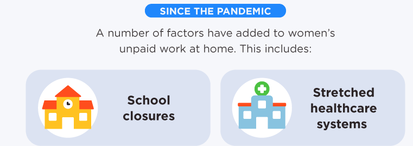|
Last March, the American National Academies of Sciences, Engineering and Medicine published the report on the Impact of COVID-19 on the Careers of Women in Academic Sciences, Engineering, and Medicine. The evidences they compiled show that the pandemic has negatively impacted the productivity, work-life balance, mental well-being of women in academia. One of the commisioned papers that integrate the report, shows how, although pandemia is causing burnout to all academics, this effect is stronger for women. Emotional and other effects of pandemic-related burnout were worse for female faculty members: 75% of women reported feeling stressed, compared with 59% of men. By contrast, in 2019, that number was 34% for female respondents. Is that endemic for academia? Unfortunately it does not seem so. March brought multiple global organizations' contributions, the European Parlament, the Global Gender Gap (GGG) Report 2021 by the Global Economic Forum, and the policy brief of the UN among others. The GGG Report showed that, the number of years needed to close the gender gap has increased from 99.5 years to 135.6 years. Regarding the main highlights of the UN's policy brief, it reminds us (as did last year) that women spend 3 times as many hours as men in unpaid and domestic work, which on average represents 4.1 hours/day per women vs 1.7 hours/day per men, and that women's unpaid cotributions to the GDP equate to 2.35%.  The pandemic is deepening pre-existing inequalities and exposing vulnerabilities in social-economic and academic systems...and it's doing it very fast! Keep in mind that closing the gap or, as of now, impeeding that it keeps growing, requires active commitment. If you are in academia, remember the Athena SWAN principles and today, more than ever, commit to remove the obstacles faced by women at your institution...and at home!
3 Comments
|
CategoriesArchives
March 2024
AuthorDifferent members of the Gender and Science AIL group will contribute to the Blog, as well as invited collaborators. |

 RSS Feed
RSS Feed